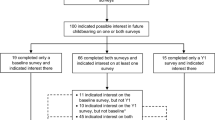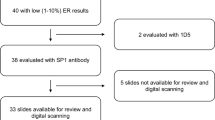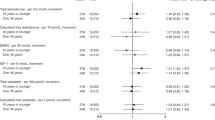Abstract
Comparisons between oestrogen-receptor (RE)-positive or negative patients were made on a continuous series of 735 patients with primary breast tumours seen at the major treatment centre in British Columbia between 1975 and 1978. RE positivity was commoner in older patients, and was not associated with menopausal status independently of age. The concentration of receptor protein also increased with increasing age, but was not affected by menopausal status. Neither RE status nor quantity was associated with any of the epidemiological risk factors studied, which included parity, age at first birth, weight, family history and exposure to oestrogenic drugs and oral contraceptives. Patients with RE- tumours were more likely to present with symptoms other than a breast lump, pain or nipple inversion, and had less-differentiated tumours, they did not differ from RE+ patients in terms of stage, size of tumour, or interval from first symptom. These findings are discussed in terms of the biological origin and determinants of oestrogen receptors.
This is a preview of subscription content, access via your institution
Access options
Subscribe to this journal
Receive 24 print issues and online access
$259.00 per year
only $10.79 per issue
Buy this article
- Purchase on Springer Link
- Instant access to full article PDF
Prices may be subject to local taxes which are calculated during checkout
Similar content being viewed by others
Rights and permissions
About this article
Cite this article
Elwood, J., Godolphin, W. Oestrogen receptors in breast tumours: associations with age, menopausal status and epidemiological and clinical features in 735 patients. Br J Cancer 42, 635–644 (1980). https://doi.org/10.1038/bjc.1980.296
Issue Date:
DOI: https://doi.org/10.1038/bjc.1980.296
This article is cited by
-
Immunohistochemical determination of estrogen and progesterone receptors in breast cancer: relationship with clinicopathologic factors in 302 patients in Ivory Coast
BMC Cancer (2017)
-
The molecular landscape of premenopausal breast cancer
Breast Cancer Research (2015)
-
Quantitative measures of estrogen receptor expression in relation to breast cancer-specific mortality risk among white women and black women
Breast Cancer Research (2013)
-
Hormone-related risk factors for breast cancer in women under age 50 years by estrogen and progesterone receptor status: results from a case–control and a case–case comparison
Breast Cancer Research (2006)
-
Cyclin D1 overexpression is a negative predictive factor for tamoxifen response in postmenopausal breast cancer patients
British Journal of Cancer (2004)



